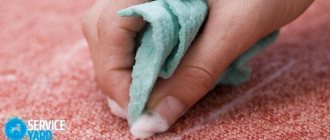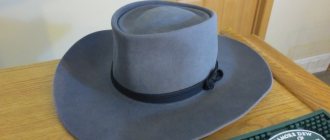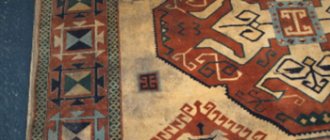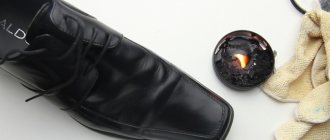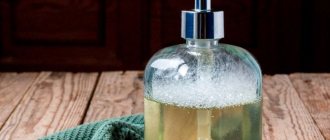Update date: 07/09/2020 17:08:50 10097 Share:
Author: Christina Frisch
*Review of the best according to the editors of simplerule.ru. About the selection criteria. This material is subjective in nature, does not constitute advertising and does not serve as a purchase guide. Before purchasing, consultation with a specialist is required.
Stains on silk clothes can be quite difficult to get rid of. Especially considering that this fabric is very sensitive to washing or mechanical stress. And greasy stains themselves are considered one of the most difficult to remove.
But, in fact, if you use the right approach, you can even get rid of a greasy stain on silk. And we will give some effective and efficient tips.
What you need to know when washing silk
There are several rules to remember when cleaning stains from silk. Nothing impossible, just simple measures to prevent disasters when washing:
- Check color fastness
. Some fabric dyes come off easily when washed. You can easily check the fastness of the paint by blotting the inside of the item with a clean, damp cloth (preferably white). If even a little color transfers from the clothing to the fabric, we recommend that you take it to a dry cleaner.
- Avoid heat
. No hot water washing, no irons, no dryers. Silk loves the cold.
- Wash with a mild detergent
. Delicate fabrics require delicate care. Take a special product for silk and wool.
- Don't use bleach.
Strong chemicals such as bleaches are likely to damage the natural fibers of silk.
- Check the label.
Some silk items are machine washable, some need to be hand washed, and some are dry clean only - take these items to the professionals.
Now you can start washing.
Laundry soap
A universal remedy in the fight against fresh stains of any origin is laundry soap. It cleans the finest fabrics well, such as chiffon, silk or organza. The fat content of soap should not be less than 70%. Mode of application:
- fatty areas should be washed with soap;
- wrap the product in cellophane;
- stand for 12 hours;
- carry out normal washing;
- rinse in plenty of water.
We can also use this method:
- lather the stain with soap;
- sprinkle a tablespoon of sugar on top;
- leave the product for a quarter of an hour;
- perform washing and rinsing.
Laundry soap will not harm silk
How to remove stains from silk
If you find a greasy stain on silk clothes, you can use one of the following methods:
- Act as soon as possible - dried stains are much harder to remove;
- Gently blot the stained area with a clean cotton swab or paper towel to remove as much dirt as possible from the fabric;
- Make a cleaning solution from a few tablespoons of lemon juice or white vinegar and the same amount of cool water;
- Before using the solution, test it on a small, inconspicuous piece of silk;
- Gently apply the solution to the stained area with a clean white cloth. Don't rub it in;
- Wash your silk item as usual, following the instructions on the label.
If the greasy stain is also staining - for example, left by a piece of stew or other food that fell on clothing - then you will need to use a different method. As with most contaminants, you need to act quickly. But the methodology is the same:
- Gently scrape off excess oil or grease;
- Sprinkle the stain generously with talcum powder and let it soak in the grease for several hours, or leave overnight;
- Carefully remove the powder from the fabric with a brush and wash the item as usual.
- Talc can be replaced with baby powder based on it.
Starch
Starch is a good helper in the fight against traces of fat on thin fabrics. It doesn't matter whether it's potato or corn. Every housewife has starch, while young parents most often have powder. After cleaning the fabric, it becomes starched. Repeated rinsing in clean, cool water will help get rid of it. If the stain cannot be removed, the procedure should be repeated. Instead of starch, you can use mustard powder. This method is used to remove old traces of fat:
- take 2 tbsp. l. potato starch;
- add water until you get the consistency of sour cream;
- the mixture should be heated and applied to the stain;
- stand for 1 hour;
- wash by adding stain remover. It can be replaced with laundry soap.
Sprinkle starch on the fabric until the stain disappears
How to remove grease stains from silk using improvised means
If there is no talc in the household, then you can use other available means:
- Laundry soap
– copes well with any fresh stains and does not harm delicate fabrics. Lather the oily area thoroughly, wrap it in a bag and leave it overnight. Wash the item as usual and rinse with plenty of water.
- Starch
– will perfectly help cope with greasy marks on silk. Both potato and corn are suitable for cleaning. This method can also be used for stubborn stains. Mix 2 tablespoons of starch with a little water. Warm the resulting paste slightly and apply to the stain. Wash the item with a silk stain remover or laundry soap. If necessary, re-process. If the item remains starchy, rinse it several times.
- Ammonia
– has a pungent odor, but copes well with grease stains. But under no circumstances use it in its pure form. Work with ammonia in a well-ventilated area and use hand skin protection. Mix two tablespoons of water, two tablespoons of glycerin and one tablespoon of ammonia. Test the resulting solution on a small, inconspicuous area of fabric. Apply it to the greasy stain and leave for 30 minutes. Wash the item as usual.
- Chalk
– perfectly removes grease stains. Apply chalk powder to both sides of the stain and leave for an hour. Then simply remove any remaining chalk with a clean damp cloth and wash the item as usual.
It is worth remembering that vinegar and ammonia are caustic. Because of this, they can damage synthetic fibers and “knock out” the paint from the fabric. Before using ammonia or vinegar based products, test them on an inconspicuous area of the fabric.
When washing silk after treatment with cleaning products, follow the instructions on the clothing label and use only household chemicals suitable for this type of fabric.
Attention! This material is subjective in nature, does not constitute advertising and does not serve as a purchase guide. Before purchasing, consultation with a specialist is required.
Chemicals for removing traces of grease
Among the chemical agents for fighting stains that have proven themselves best:
- SA8 stain pre-removal spray from Amway;
- Vanish Oxi Action liquid stain remover for delicate fabrics;
- Ace Oxi magic;
- Udalix Oxi Ultra;
- cover remover;
- Sarma Active;
- Antipyatin. The product is available in the form of soap, powder or spray;
- Astonish Oxi Plus;
- Laundry baby soap Eared nannies with whitening effect;
- Faberlic, Edelstar universal stain remover pencil.
Some of them must be added to the water when washing, others are used to pre-treat the soiled surface. The quality of a product often does not depend on its cost. Therefore, you should not rely on price as a guarantee of high quality stain remover.
An important role in achieving the result is played by the device used to apply the stain removal composition.
Best suited for this role:
- soft brush;
- fresh disposable cloth;
- cotton pad;
- clean brush;
- cotton swab.
The softer the chosen tool, the less likely it is to ruin the delicate fabric.
Silk products require frequent ventilation and drying. They are afraid of direct sunlight and high humidity.
Other contaminants
Before washing, wipe stains from dust and dirt with a napkin soaped with laundry soap. Rubbing soap directly over the stain is not recommended. Then the item should be washed as usual.
It is difficult to remove tea or coffee stains from silk fabric, but you can try. For this you need glycerin. Gently wipe the stain with a cotton pad soaked in glycerin, wait about thirty minutes and then rinse off the glycerin with warm water. Then wash the item completely in liquid detergent or shampoo.
An elegant silk dress often suffers from various alcohol stains. When you get home, immediately rinse the stain with warm water, then apply glycerin to it with a cotton pad. Very lightly, using circular movements, rub the glycerin into the fabric. Then rinse again with warm water. To obtain a faster result, glycerin can be heated, but not more than forty degrees.
Fresh wine stains disappear if the affected area is rinsed in warmed milk. The milk is rinsed first with cold water and then with warm water.
Unfortunately, quite difficult to remove stains on silk also form from your favorite perfumes and other perfumes. Perfume that gets on silk fabric can even discolor the fabric. To remove such a stain, use a napkin or cotton pad soaked in denatured alcohol. You can’t rub the stain; you need to blot it, as it were. If the result is unsatisfactory the first time, do the procedure again. Then wash the entire product.
Lipstick stains on silk can be easily dissolved by rubbing alcohol.
When removing stains on artificial silk with any acid (vinegar, lemon, oxalic acid), hydrogen peroxide, acetone, be sure to first test the product on an inconspicuous area. And only after you make sure that the fabric is not damaged, you can use the selected stain remover. If the product is very expensive or heavy (a brocade curtain, for example), entrust its care to professionals, perhaps this method will be more expensive, but you will save nerves, effort and time and, most importantly, preserve the structure and color of the product itself.
Natural silk
Natural silk has always been considered a capricious fabric. It should only be washed by hand, use delicate products, cannot be bleached, and cannot be rubbed. But it is not all that bad. If you know some of the features of caring for silk products, then you can easily cope with washing an evening dress, a thin gauze cape, bed linen, and heavy curtains at home.
If the product is dry, do not spray it with water; splash marks may remain on it. It is better to completely wet the item again and then iron it in a half-dried state.
Features of silk fabric
Before we understand how to remove and wash greasy stains on silk at home, let's figure out why this fabric is so special.
Silk has a very smooth and durable structure. With this, perhaps, one way or another, everything was always clear. But few people know that such fabric does not cause allergic reactions or other irritations. This is very important for people with a predisposition to such phenomena.
Important! Natural silk does not contain dust mites and fungi, which makes it an ideal material for sewing underwear and bed linen.
At the same time, silk also has disadvantages. It reacts very sensitively to temperature both during washing and ironing. So be extremely careful that your favorite product does not develop unnecessary warping or shrinkage. To avoid any problems with this, use our instructions from the articles:
